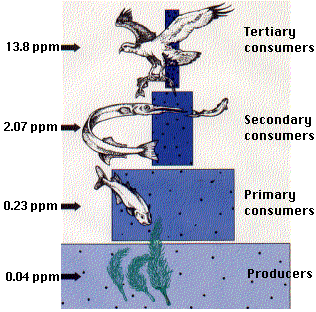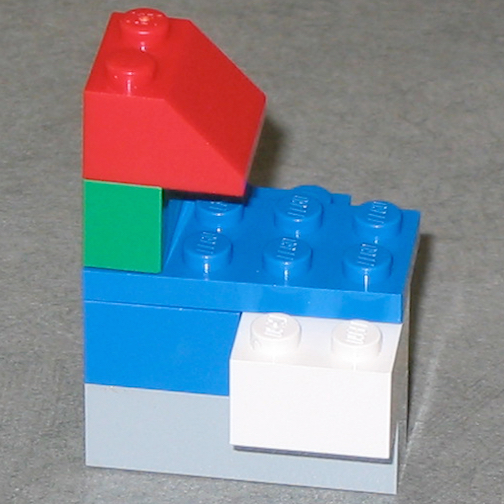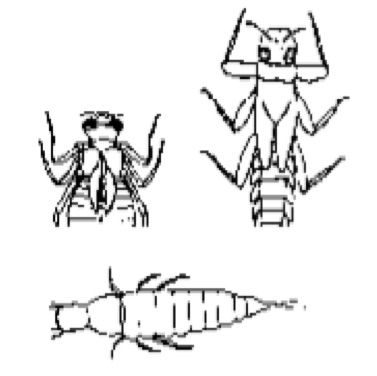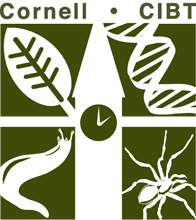Labs & Activities

Abuse-a-Cyst- University of Utah
2012 CIBT Alumni Workshop
Animals
Ecology
High School
Inquiry/Scientific Method
Middle School
Brine shrimp populations survive in some of the harshest environments. Subject brine shrimp cysts to extreme conditions then try to hatch them to see just how tough they are! Downloads Abuse a Cyst Lab (University of Utah)

Acid Rain Lab- Katherine Betrus Derrico
2012 CIBT Alumni Workshop
Ecology
High School
Inquiry/Scientific Method
Middle School
Plants
Students will design and conduct an experiment to test the effect of acid rain on the germination of seeds. They will utilize the data from their experiment to explain their conclusions, and also read a passage on acid rain. Downloads Acid Rain Lab Rubric (Katherine Betrus Derrico) Acid Rain Lab… read more of the article entitled “Acid Rain Lab- Katherine Betrus Derrico”

Battle-jar Galactica- Matt Downing
2012 CIBT Alumni Workshop
Ecology
High School
Microbiology
In this investigation students will study the types of bacteria that grow during the formation of sauerkraut, identify some characteristics of each, as well as research the type of respiratory pathway used by the organisms to break down the cabbage to get their energy. Downloads pH Questions (Matt Downing) Bacteria… read more of the article entitled “Battle-jar Galactica- Matt Downing”

Biological Shapes
High School
Molecular Biology
Physical Sciences
Remember the old salad dressing commercial tag line “…because oil and vinegar don’t mix!” Water has that same love/hate relationship with many other molecules. Through this series of lessons, students will learn about the properties that make other molecules “love” or “hate” water. They will also begin to build a… read more of the article entitled “Biological Shapes”

Biomagnification Lab- Todd Shuskey
2012 CIBT Alumni Workshop
Animals
Ecology
High School
This lab demonstrates how contaminants can accumulate in organisms within a food web by using paper cutouts and M&M®s candies to simulate fish, osprey, and DDT. Students can see how the contamination levels increase as the trophic level increases. Downloads Biomagnification Lab Pictures (in color) Biomagnification Lab Pictures (in black and… read more of the article entitled “Biomagnification Lab- Todd Shuskey”

Blood Vessel Physiology
High School
Human Health
Physical Sciences
Physiology
This lab investigates the physical mechanisms by which our blood vessels function in allowing the circulatory system to do its job. Blood vessels are not simply rigid tubes that conduct blood to our tissues like copper pipes carrying water to our houses, nor are they infinitely extensible balloons that can… read more of the article entitled “Blood Vessel Physiology”

Bottle Ecosystem- Tim Downs
2012 CIBT Alumni Workshop
Animals
Ecology
High School
Inquiry/Scientific Method
Middle School
Physical Sciences
Plants
The objective of this lab is to put together a suitable habitat (ecosystem) that will allow one or two guppies to survive to the end of the school year and beyond. Students will make observations of their ecosystems for the three weeks. The ecosystem in this experiment will be closed,… read more of the article entitled “Bottle Ecosystem- Tim Downs”

Bouquet of Flowers
Ecology
Evolution
High School
Inquiry/Scientific Method
Insects
Plants
Recently Updated!
This series of four different lab activities all relate to flower reproduction. They have been designed to relate to each other and to stand alone. Name that Pollinator focuses on adaptations for successful pollination. Both pollen and pollen vectors are examined. Observing, data gathering, making measurements through the microscope, and… read more of the article entitled “Bouquet of Flowers”

Bovine Uterus Dissection
Animals
High School
Human Health
Physiology
The instructor will dissect an early to mid-pregnant bovine reproductive tract. Data on crown rump length and fetal mass can then be collected for use with CIBT’s Fetal Development Lab. Some appreciation of the form and function of the various organs should be developed by students. This exercise will also… read more of the article entitled “Bovine Uterus Dissection”

Building Blocks of Life
Evolution
Genetics
High School
Molecular Biology
Recently Updated!
The shape of a protein determines its function. In this lab, students will be given a hypothetical DNA sequence for part of an enzyme. Using the Universal Genetic Code, they will then determine the amino acid sequence coded for by the DNA. Students will examine a “substrate” and predict the… read more of the article entitled “Building Blocks of Life”

Catalase
High School
Molecular Biology
The structure and function of enzymes is a central theme in cellular and molecular biology. In this laboratory exercise, a crude cell extract is prepared from potatoes. Activity of the enzyme, catalase [which catalyzes the reaction 2H2O2(l) → 2H2O(l) + O2(g)], is then studied using a simple assay for O2. To… read more of the article entitled “Catalase”

Comparative Skulls
Animals
Ecology
Evolution
High School
Middle School
Physiology
What can a skull tell you? A lot! If you look at a skull for clues about its origin, not only can you identify what species it might be from, but you can learn many details about the original animal. In this lab, students will determine what clues to analyze in… read more of the article entitled “Comparative Skulls”

Comparing Aquatic Communities
Animals
Ecology
Evolution
High School
Inquiry/Scientific Method
Insects
Microbiology
Physical Sciences
Plants
Teams of students measure physical and chemical characteristics of different sites in streams and/or ponds and collect benthic invertebrate organisms. They interpret patterns in the structure of the biological community at each site in light of the abiotic (physical and chemical) and biotic nature of the environment. Downloads Comparing Aquatic… read more of the article entitled “Comparing Aquatic Communities”

Diffusion
High School
Inquiry/Scientific Method
Molecular Biology
Physical Sciences
Physiology
This lab uses two different sizes of dialysis tubing to represent cellular and organelle membranes. Students design experiments in which they place solutions of iodine, starch, and glucose on different sides of a membrane. The movement of these materials is monitored with the use of indicator solutions. Students are given… read more of the article entitled “Diffusion”

DNA Molecule Activity
Genetics
High School
Molecular Biology
This lab activity corresponds to CIBT’s DNA Molecule Model. Downloads DNA Molecule HS Student Edition (CIBT) DNA Molecule MS Student Edition (CIBT) DNA Molecule Post-Lab Questions (CIBT) Watson & Crick Reading (CIBT) Watson&Crick Reading Qs Student Edition (CIBT) Watson&Crick Reading Qs Teacher Edition (CIBT) DNA Blankenship Notes (CIBT)

